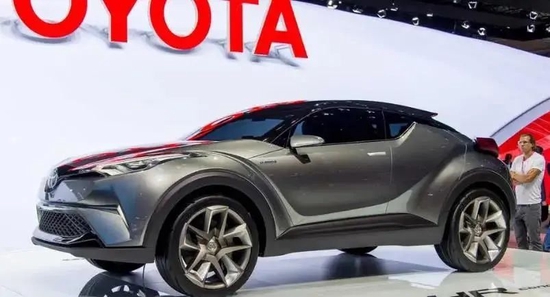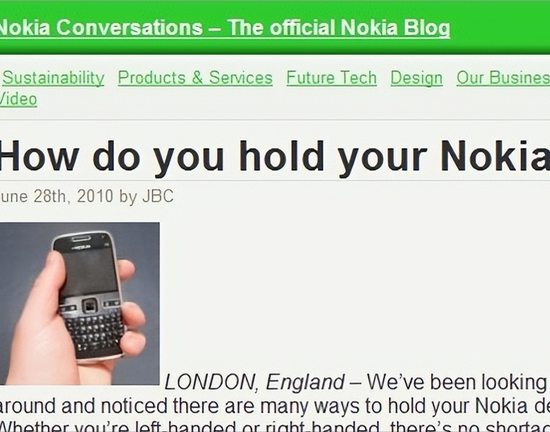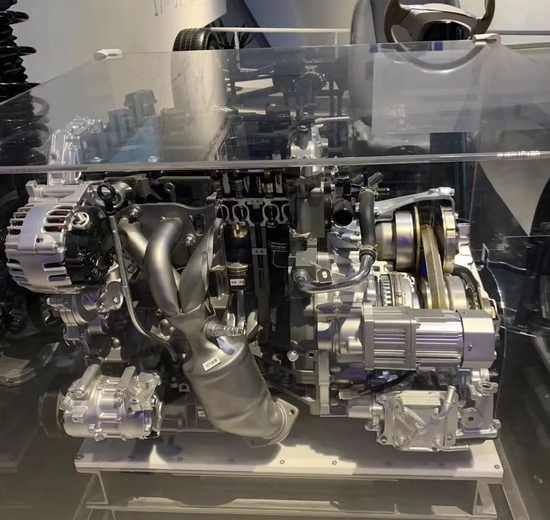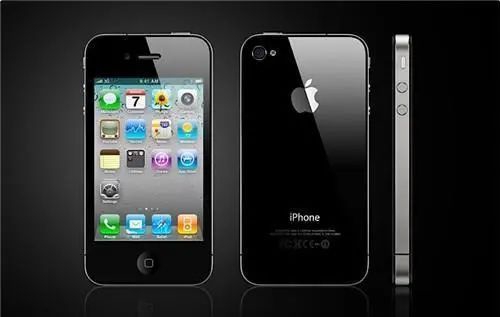
Welcome to the WeChat subscription number of “Sina Technology”: techsina
Text / Wang Xinxi
Source: Hot Micro Comments (ID: redianweiping)
After the rise of new energy vehicles, the most affected are undoubtedly Toyota and Honda, the representatives of fuel vehicles.
The ban on combustion in various countries around the world will have a direct impact on the fuel vehicle market, which makes fuel vehicle companies led by Toyota into unprecedented anxiety. California, in particular, has also announced a ban on all new gasoline vehicle sales starting in 2035.
Data shows that more than 20 countries around the world have announced that they will ban the sale of fuel vehicles in the next few years and develop new energy vehicles.
A few days ago, Toyota CEO Akio Toyoda said that it is difficult to achieve electric vehicle goals like California, and not enough people want a pure electric vehicle. He also added that Toyota has no plans to rush out a lineup of pure electric vehicles like some rivals.
Toyota has been bombarding electric vehicles many times. Earlier, the bombardment of electric vehicles was hype. Later, it pointed out that the world is not ready for the era of all-electric vehicles. The imperfect infrastructure will bring trouble to pure electric vehicles.
Later, Akio Toyoda believed that electric vehicles are not environmentally friendly. In a country like Japan, where most of the electricity comes from burning coal and natural gas, promoting electric vehicles is not good for the environment. More carbon dioxide will be released in the process.
From Toyota’s repeated bombardment of electric vehicles, there is no doubt that Toyota does not want to see consumers switch from the fuel vehicle camp to the new energy camp, which reflects Toyota’s obvious anxiety and panic, because the trend of electrification is already obvious, but the trend of the times has Not owned by Toyota.

Strikingly similar history
From Toyota’s bombardment of electric vehicles, and underestimating or underestimating electric vehicles, this anxiety is actually very similar to Nokia’s attitude when it saw the arrival of the smartphone boom.
On January 10, 2007, Apple CEO Steve Jobs released the first Apple smartphone, the iPhone, and the iPhone generation was born.
But at that time, the smartphone market was still dominated by Nokia.
This year, the Nokia N series was popular all over the world, especially the N95 launched this year, which has become a classic model sought after by a generation of consumers. The launch of the iPhone did not suppress the popularity of the N series, although some executives were aware of the threat , but there are still many Nokia executives who are laughing at the iPhone and how promising a phone without a keyboard can be.

At that time, when Nokia engineers saw the iPhone, they also asserted that there was no market for the phone, because the iPhone could not guarantee the integrity of the phone after it was dropped from a height of 1 meter.
Later, when the iPhone 4, which spanned the era, appeared, Nokia laughed at the signal problem of the iPhone 4 and published an article on its official blog titled “How do you hold a Nokia phone?” ” article.

In the article, Nokia pointed out: Nokia mobile phones can be held with the left hand in four ways: “grip type, cup type, balance type, and four-point type”. No matter if you hold it with the left hand or the right hand, you will not encounter any signal problems. This alludes to the fact that the iPhone 4 mobile phone has an antenna set in the lower left corner of the mobile phone, so holding the iPhone 4 in the left hand will cause the weakening or loss of the iPhone 4 signal.
And at the end of the article, it’s pretty cool, isn’t it?
In fact, we can see that the striking similarity in history is that when faced with the inflection point of the times, Toyota and Nokia, as industry leaders, without exception, chose a conservative and stubborn attitude. Weaknesses express ridicule and bombardment.
Behind this conservativeness are complex emotions that are a combination of panic and anxiety.
For example, in the two years after Apple launched the original iPhone, part of Nokia’s leadership gradually realized that smartphones were likely to be the future of mobile communications, and that system software would be the key to success or failure in the mobile phone industry. Nokia later called 12 executives to talk and asked them what they thought of the iPhone. Two of them don’t think the iPhone poses a serious threat, and the other 10 don’t think the iPhone should be underestimated.
At that time, Nokia’s market share of feature phones was still expanding. This immediate growth provided it with enough comfort zone inertia. Moreover, Nokia’s lack of accumulation in smartphone and new system development, Nokia was aware of the problem, but it has accumulated hard to come back. .
Ollila, then Nokia’s CEO, later recalled in the book that even though the company was aware of the threat posed by Apple, it was still difficult to reverse its fortunes.
“We all know what the problem is, but deep down we can’t accept the reality,” he said. After all, the computer industry tradition and operating system on the West Coast of the United States are too strong, which is the main factor, but Nokia has already turned around.
At that time, Nokia also realized that to compete with iOS, it needed a better operating system than the Symbian system at that time, but it may be too late. After all, the development of the operating system will take several years, and it is also worried that the abandonment of Symbian will be used by external investors. , suppliers and consumers are considered “losers”. This directly led Nokia to fall further into the abyss.
Judging from today’s Akio Toyoda, he undoubtedly realizes that the trend of automobile electrification is unstoppable, but deep down he cannot face the reality.
After all, the sales momentum of Japan’s fuel vehicles is still maintained. In 2021, it will overwhelm German Volkswagen with 10.5 million sales, and will continue to be the world’s largest car company. As the Chinese market, which is called “the most important” by the head Akio Toyoda, it has contributed 1.944 million vehicles and continues to be the second largest market in the world.
However, this year, the trend of automobiles is undergoing a subtle change. In the second quarter of this year, Toyota’s decline has gradually emerged, and its net profit has decreased by 18.2% year-on-year to 38.3 billion yuan. During the same period, Tesla’s net profit was 16.2 billion yuan, a year-on-year increase of 93%, and BYD also rose by 132%.
Toyota realizes that emerging electric car companies such as Tesla, BYD, etc. are building a new track – from three-electric technology to autonomous driving, and accumulating enough barriers at the level of intelligence and software.
But Akio Toyoda is powerless to change anything. After all, the technical barriers established by Toyota in the three major fields of fuel vehicles are too deep.
In the automotive circle, Toyota is hailed as an “unbreakable” car in the industry. It is difficult to turn around, especially in the era of electrification, which requires Toyota and even the entire Japanese auto industry to restructure the industrial chain, and a large number of parts and components industries in Japan will lose their survival. space, this adjustment is unrealistic.

Electric vehicles bypass the two biggest technical barriers of fuel vehicles in the gearbox and engine, and change the driving mode of the car through the three major batteries, motors, and controllers of electric vehicles. The electronic and electrical architecture adopts a centralized and layered structure similar to mobile phones. The number of ECUs (control units) is only 10, which achieves decoupling of software and hardware, and is a software-defined car model.
Tesla is a master of software-defined cars. It is regarded by many people as the Apple of the automotive industry, with strong innovation genes and better software advantages.
Tesla is essentially a platform model. The car is a platform that can continuously upgrade software capabilities. Tesla has also introduced the concept of software application stores for the first time in the industry. The OTA upgrade capability of the entire vehicle allows Tesla to be like Mobile phones can also adjust hardware performance and upgrade online, thus expanding the imagination of software profitability.
BYD has also formed a first-mover advantage at the underlying technology level from vehicle manufacturing to battery, motor, and electronic control technologies.
To compete with BYD and Tesla in the field of electric vehicles, Toyota has to abandon the technical barriers established by fuel vehicles, but despite this, it is still not difficult for Toyota to transform with its past accumulation.
Will Toyota follow in Nokia’s footsteps?
Therefore, in fact, both Toyota and Nokia have seen the direction of the tide. They either stick to the track and emphasize their original advantages, or follow the direction of the tide, and nothing else can change.
The difference, though, is that Toyota has more time and more reason to bet on its original track than Nokia. Even Toyota still has time to lay out an electrified track.
Toyota also plans to invest US$70 billion in the research and development of electric vehicles in the next 9 years, of which US$35 billion will be used in pure electric vehicles. On December 14, 2021, Toyota was at the global electric vehicle strategy conference. Released 15 new pure electric new cars in one go.
Another advantage of Toyota lies in the industry. Compared with the rapid advancement of the intelligent tide in the mobile phone industry, the replacement cycle of automobiles is much longer than that of mobile phones, and the overall electrification and intelligent transformation is much slower. The user group who has a preference for fuel vehicles It is much larger, and the consumer group who is not optimistic about electric vehicles is still very large.
Therefore, unlike the rolling experience advantages of smartphones represented by the iPhone over feature phones, the stunning touch-screen experience brought by the iPhone 4 is visible to the naked eye, and it allows almost everyone to see the changes brought about by smartphones. The tide has also quickly poured into the camp of smart phones from feature phones

However, electric vehicles currently do not show the so-called rolling advantage over fuel vehicles. Different from the disruptive innovation brought about by the touch-screen experience of smartphones, this innovation of electric vehicles is an innovation that is different from the technical route of fuel vehicles, and does not yet have a disruptive innovation effect.
At present, fuel vehicles and electric vehicles are two different technical routes. The operation mode of the car and the core just-needed purpose of realization are the same – transportation, from the starting point to the end point, whether it is speed, experience, or control mode, they are all in the same dimension competition.
Of course, if someone says that the core purpose of a car will not be for transportation, but for intelligent entertainment, this kind of rhetoric is either to cut leeks or not to take life seriously. The attributes of mobile phones and automobile products are fundamentally different. Mobile phones can put entertainment first and communication second, but automobiles are related to life safety. Entertainment and intelligence can never surpass transportation and safety as the first priority.
Although fuel vehicles are constantly strengthening their intelligence capabilities, there is no doubt that they will be surpassed by electric vehicles in terms of intelligent experience. In terms of battery life, stability, safety, quality control and high-quality products, electric vehicles are still relatively low compared to fuel vehicles. There are disadvantages.
The problem is that, judging from the trends in China, the United States, and Europe, fuel vehicles are denied as a future trend at the policy level, and the entire global automotive development is transitioning to new energy vehicles.
Toyota’s anxiety is here. Fuel vehicles still retain their inherent advantages, and there are still many inherent shortcomings in the electrified market that cannot be resolved, but mainstream markets (China, the United States, and Europe) that occupy 70% of the global market share have already chosen Vote with your feet into the electrified, intelligent camp.
Domestically, Hainan Province has proposed that by 2030, the entire island will completely ban the sale of fuel vehicles, making Hainan the first province in China to ban the sale of fuel vehicles.
Since 2016, European governments and the European Union have successively set the goal of phasing out the sale of fuel vehicles within the next 20 years, and will generally achieve full-scale new energy vehicles by 2030. Now the United States has also begun to follow up on the ban.
If Nokia is defeated by the intelligent touch screen experience change to meet the rigid needs of users, Toyota is actually worried about losing to a new route technology, coupled with the conscious policy guidance and promotion of the entire mainstream world, this trend makes Toyota more disturbed.
Fuel vehicles are also promoting their own intelligent transformation, and the current electric vehicles are not comparable to the absolute leading edge and transformative experience of Apple compared to Nokia in the mobile phone industry.
The whole world is inclined to new energy, but in fact, the victory or defeat of fuel vehicles and electric vehicles is not divided. It takes time to verify who wins and who loses. Toyota’s bombardment also has its own reason.
Although the preferences of car consumers have their own camps, time belongs to the electric vehicle side. After all, the improvement of power battery life, the price drop, the improvement of the value preservation rate, and the improvement of the control experience are the general trends, which is undoubtedly not conducive to fuel. The brand premium of the car is rising and the value preservation rate is maintained.
If Toyota comes up with new products that are strong enough and have its own innovative ideas in the fuel vehicle market and hybrid market, Toyota can maintain its glory, but if Toyota keeps sticking to the original advantages of the fuel vehicle track, it may become more and more Danger.
Although compared to Nokia being subverted in just a few years, the fuel vehicle market represented by Toyota has not yet been subverted. However, there is not much time left for Toyota to wait in place.

(Disclaimer: This article only represents the author’s point of view and does not represent the position of Sina.com.)
This article is reproduced from: http://finance.sina.com.cn/tech/csj/2022-10-11/doc-imqqsmrp2182173.shtml
This site is for inclusion only, and the copyright belongs to the original author.